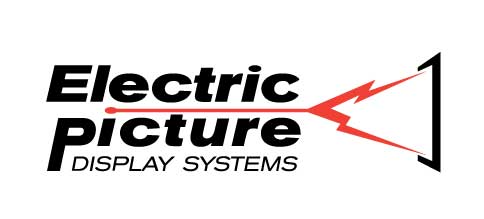Kongsberg Maritime Simulation Inc. and partners Electric Picture and Christie Digital Systems USA deploy second state-of-the art simulation solution
CYPRESS, Calif. – (February 2011) – The second of two ship’s bridge training simulators at the US Naval Academy (USNA) in Annapolis, Maryland was recently commissioned to assist underclassmen to learn ship’s navigation and safety on the high seas and in scores of harbors around the world. These USNA bridge simulators are built by Kongsberg Maritime Simulation Inc., which in turn relied on design and service support from Electric Picture Display Systems, Inc. of Melbourne, Florida and state-of-the-art simulation projectors from Christie Digital Systems USA, of Cypress, California.
The USS Storm was commissioned in late November 2010 and was used by more than 180 underclassmen per day in December 2010 alone. Up to 4,000 students are expected to use the simulators for training this year. Reaction has been highly favorable, as the varied scenarios and vivid, real-world detail provided by the simulations are the next best thing to being there. The USS Doyle simulation bridge was completed in December, 2009.
“The US Naval Academy needed a durable, low-maintenance solution that could provide its students with realistic training scenarios all day, every day. Our solutions, anchored on Christie’s projectors, are helping them do just that,” says David Meers, account executive for Kongsberg. “We provide our customers with reliable, ready-to-use ‘workhorse’ simulators, without a lot of extra features they won’t often use, and this is getting a great reception in the marketplace,” he added.
Each simulation room includes seven projectors arranged in a 1×7 array, to provide a field of view of about 210 degrees in one room and 205 degrees in the other. The simulator for the USS Storm projects images 12 feet high, while the USS Doyle features images of eight to nine feet in height.
“Both installations demanded market-leading technical reliability and outstanding image quality. By using three-chip DLP® we ensured the visual punch needed by supplying the entire color spectrum. This is especially vital for the USS Storm, which projects detailed images 12 feet high and 16 feet wide for each channel,” says R. P. Higgins of Electric Picture. As well, Christie’s service and support is the best and they respond quickly and professionally. This is important for all customers, who typically plan on working their simulators for a minimum of five years, and therefore need to know that their projectors are up to the task,” says Mr. Meers.
The database feeding the USNA system incorporates images from all types of ships, including giant aircraft carriers, destroyers and submarines. The simulators help the academy provide the most effective training available, preparing its graduates for leadership roles throughout the US Navy.
Christie Package is Feature/Function Rich
The bridge simulators use Christie DS+6K-M 3-chip DLP systems with dual lamps. Both simulators incorporate Christie Twist™ and Christie AutoCal™. The lamps in the projectors use Christie’s LiteLOC™, a light output control technology that, with Christie Twist, provide optimum optics while ensuring that the projector stays within registration convergence with AutoCal.
“The second bridge was a greater technical challenge, since it involved a larger display area with increased height, shorter throw lenses and required a large overlap of each projector’s throw, but Christie has a number of features to meet the challenge,” added Meers.
For example, ChristieTwist has an easy-to-use GUI that runs on an external PC and enables users to configure many of the features of the hardware board. And Christie AutoCal provides automatic display system calibration, giving the end user expert image display adjustment via a simple checkbox interface. This feature allows the user to re-calibrate both geometry and blending with superior accuracy, efficiency and ease.
About USNA
The United States Naval Academy was founded in 1845 by the Secretary of the Navy, George Bancroft, in what is now the historic town of Annapolis, MD. The Academy gives young men and women the up-to-date academic and professional training needed to be effective naval and marine officers in their assignments after graduation. For more information, visit www.usna.edu.
|
About Christie Christie Digital Systems USA, Inc. a wholly-owned subsidiary of Ushio Inc., Japan (JP:6925), designs, builds and installs customized projection display solutions. Christie® delivers turn-key solutions for sophisticated virtual reality, simulation systems and control room environments including high-resolution power walls, multi-sided immersive environments, curved screen displays, domed simulation and multi-projector arrays. Industries and organizations that rely on Christie range from government agencies to oil and gas, aerospace to entertainment, and manufacturing and design to pharmaceuticals. Christie is listed among Military Training Technology magazine’s Top 100 simulation companies and has been awarded the Blue Ribbon for Innovation as well as the Red Ribbon for Best Program for the Christie Matrix StIM™. The awards recognize companies around the world that have made a significant impact on the military training industry across the spectrum of technologies – serious gaming, live training, constructive simulation, modeling, virtual simulation and others. For more information, visit www.christiedigital.com. |
About Electric Picture
Electric Picture has been engineering and installing state-of-the-art projection systems for simulation, VR, network ops centers, corporations, government and religious organization since 2003. Located in the greater Melbourne area of Florida’s Space Coast, Electric Picture Display Systems operates from its 4,000 square foot headquarters facility. The facility houses fabrication workshop, demonstration setups including a helicopter training simulator, research and development, and core company personnel.








